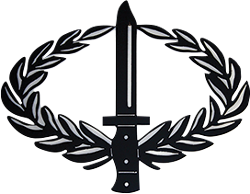
The Swiss cheese model
Created by James Reason
James Reason
Welcome to the realm of safety and risk management, where James Reason’s Swiss Cheese Model stands as an influential framework. Developed by James Reason, a renowned psychologist and scholar in the field of human error, the Swiss Cheese Model offers a vivid depiction of how complex systems can fail and lead to accidents.
Imagine each layer of defence within an organization or system as slices of Swiss cheese, each possessing inherent weaknesses or holes. These holes represent potential failure points or vulnerabilities. However, the key insight lies in understanding that no single layer is flawless—much like the holes in Swiss cheese do not align perfectly. When these imperfections do align, they create a clear path for an error or failure to pass through all the layers, resulting in an catastrophic event.
A layered approach
The Swiss Cheese Model underscores the importance of a multi-layered defense approach and the need for constant vigilance in identifying and addressing potential weak points. By recognizing that errors are a part of any complex system, organizations can proactively implement strategies to mitigate risks, fortify their defenses, and enhance overall safety.
By establishing various defences (slices of cheese) through the implementation of elements like policies, procedures, human education and robust equipment organisations mitigate the risk of foreseeable problems.

A layered approach
The way that we make your staff safe is similar to the way you secure your home. In order to prevent the opportunity for theft to occur, your home, just like the Swiss cheese model, has layers of defences that attempt to prevent, deter, delay and detect intruders.
The layers of defences commonly found in private residence include: fences, dogs, automated lighting, electronic devices like CCTV and alarm systems, and the locking of external doors and windows.
Should all of those layers fail to stop an intruder (which does happen), and you find yourself confronted by a violent offender your last line of defence is your defensive tactics knowledge of which your right to self defence using proportionate force, if necessary, is just one of many options.
The weakest link
Regardless of your policies and procedures for securing your home, the weakest link in your defence is the human element. Specifically peoples beliefs and attitudes.
The fence works well, if the gate is shut. The lights will deter many offenders intent on stealing your belongings, if they are turned on. The door will protect you from violence, if its locked. Similarly a smoke detector will save your families life if they are installed and you have changed the batteries.
Ultimately you are significantly safer if you and your family believe that the opportunity for conflict or potential violence exists and steps have been taken to mitigate those risks.







